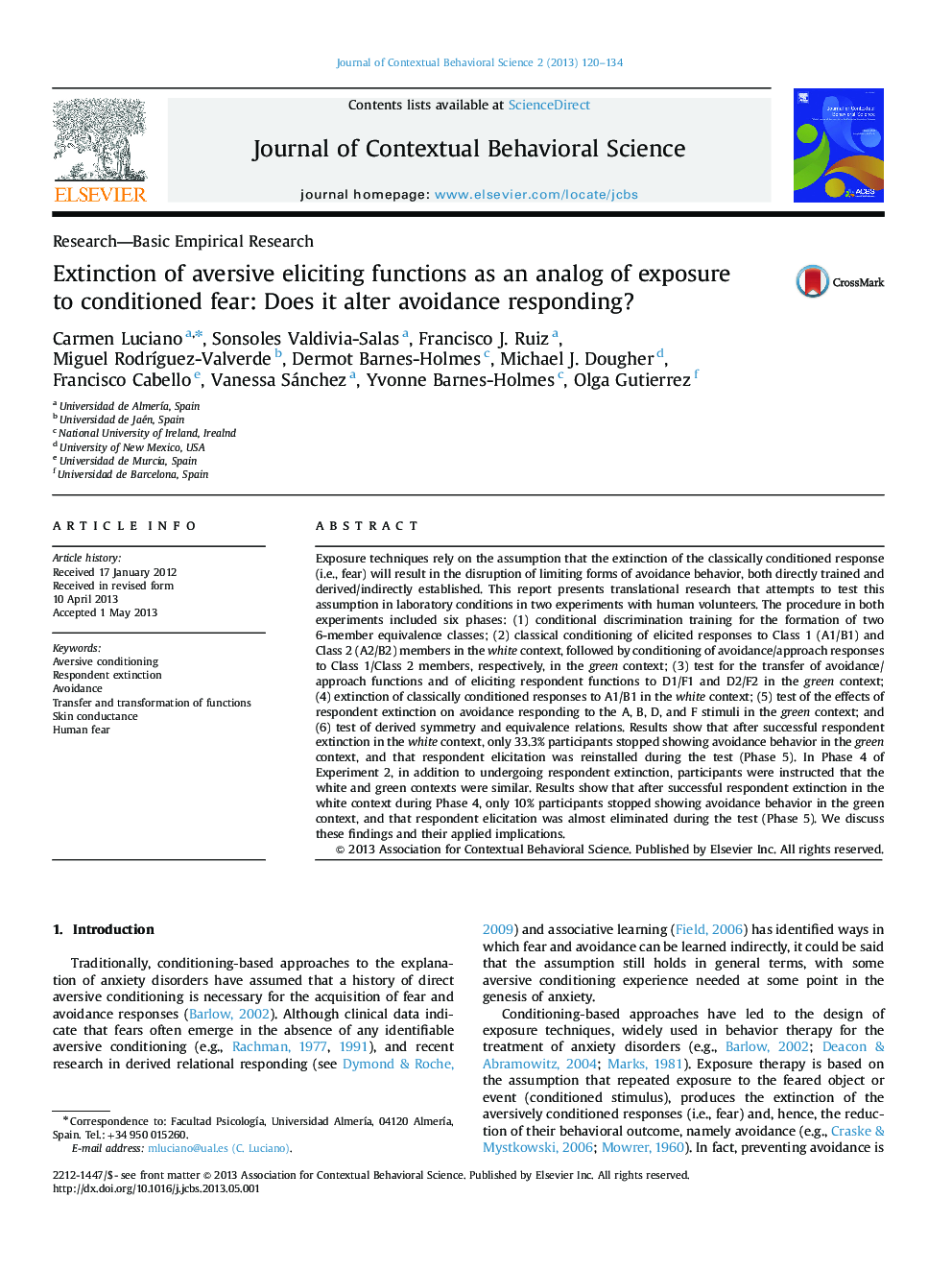| کد مقاله | کد نشریه | سال انتشار | مقاله انگلیسی | نسخه تمام متن |
|---|---|---|---|---|
| 911267 | 1473122 | 2013 | 15 صفحه PDF | دانلود رایگان |

• Extinction of respondent activation did not alter avoidance responding.
• The avoidance context reinstated formerly extinguished respondent activation.
• Despite the lack of respondent activation, participants continued avoiding
• Our difficulties to eliminate avoidance resemble those in the clinical context.
• Further research on the rules underlying participants’ performance is needed.
Exposure techniques rely on the assumption that the extinction of the classically conditioned response (i.e., fear) will result in the disruption of limiting forms of avoidance behavior, both directly trained and derived/indirectly established. This report presents translational research that attempts to test this assumption in laboratory conditions in two experiments with human volunteers. The procedure in both experiments included six phases: (1) conditional discrimination training for the formation of two 6-member equivalence classes; (2) classical conditioning of elicited responses to Class 1 (A1/B1) and Class 2 (A2/B2) members in the white context, followed by conditioning of avoidance/approach responses to Class 1/Class 2 members, respectively, in the green context; (3) test for the transfer of avoidance/approach functions and of eliciting respondent functions to D1/F1 and D2/F2 in the green context; (4) extinction of classically conditioned responses to A1/B1 in the white context; (5) test of the effects of respondent extinction on avoidance responding to the A, B, D, and F stimuli in the green context; and (6) test of derived symmetry and equivalence relations. Results show that after successful respondent extinction in the white context, only 33.3% participants stopped showing avoidance behavior in the green context, and that respondent elicitation was reinstalled during the test (Phase 5). In Phase 4 of Experiment 2, in addition to undergoing respondent extinction, participants were instructed that the white and green contexts were similar. Results show that after successful respondent extinction in the white context during Phase 4, only 10% participants stopped showing avoidance behavior in the green context, and that respondent elicitation was almost eliminated during the test (Phase 5). We discuss these findings and their applied implications.
Journal: Journal of Contextual Behavioral Science - Volume 2, Issues 3–4, 15 October 2013, Pages 120–134